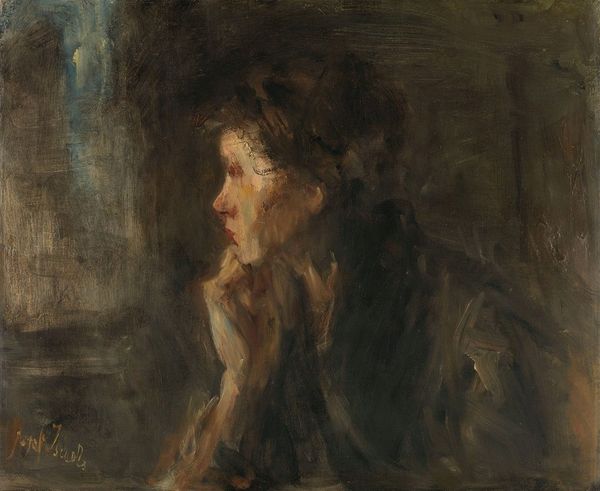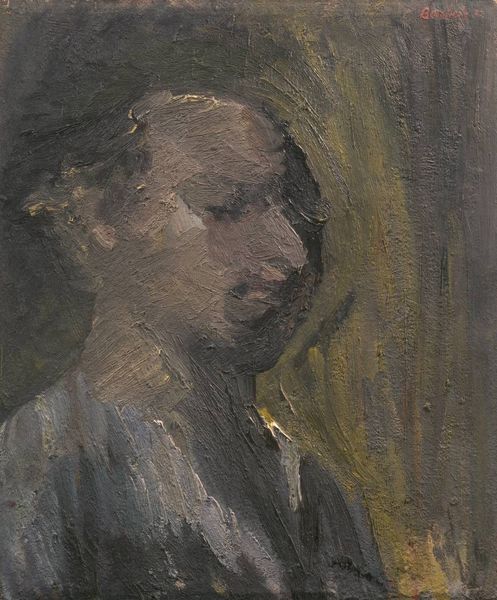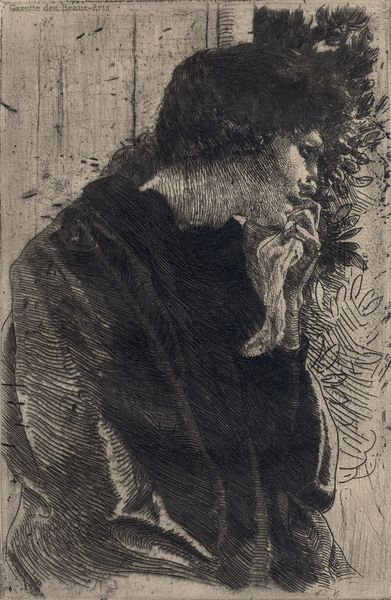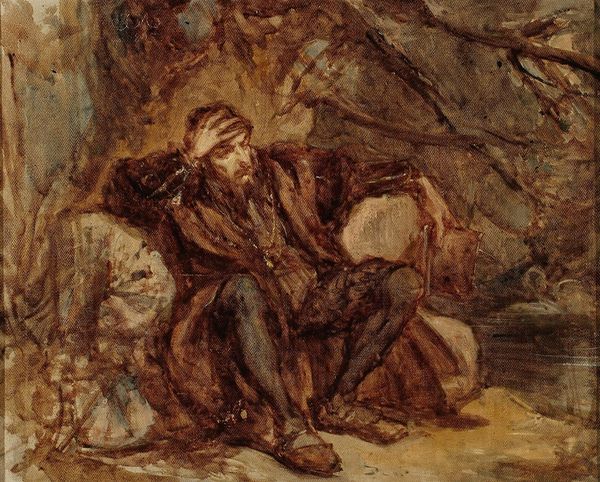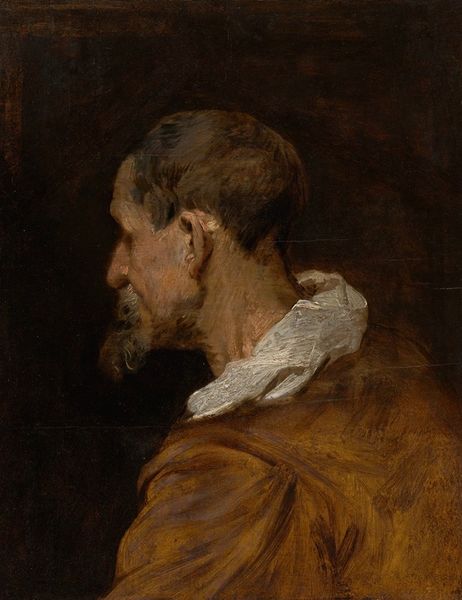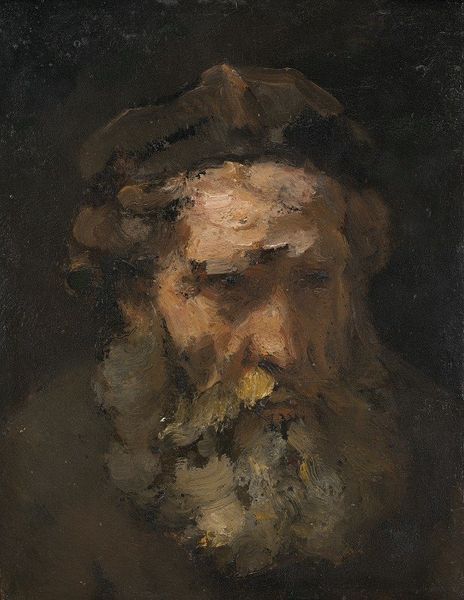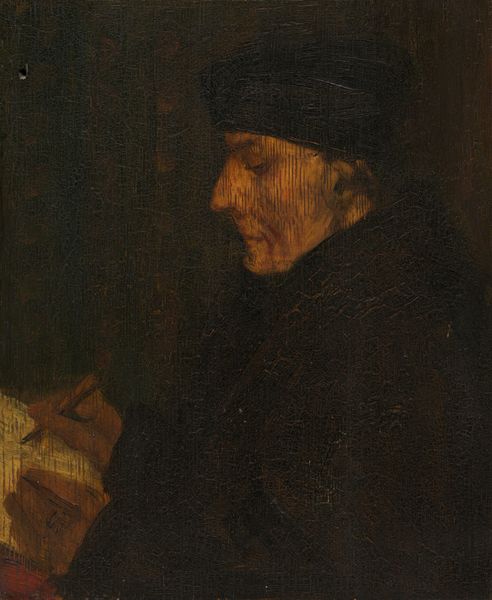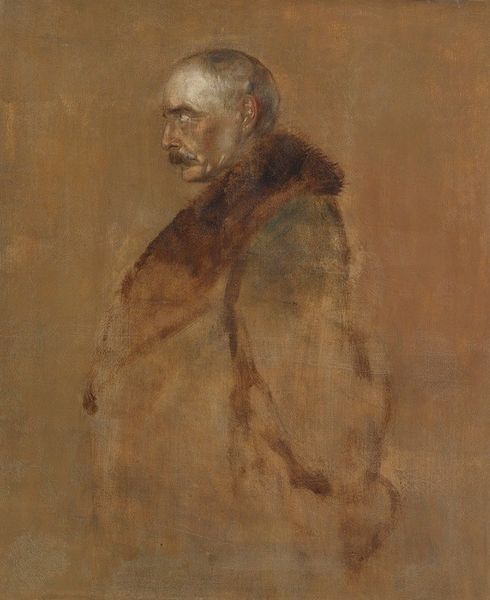
#
figurative
#
abstract expressionism
#
abstract painting
#
possibly oil pastel
#
oil painting
#
fluid art
#
acrylic on canvas
#
underpainting
#
painting painterly
#
watercolor
#
expressionist
Copyright: Public Domain: Artvee
Editor: So, here we have Félix Ziem's "Tête d’homme, d’après Rembrandt" from 1853. It definitely has this moody, almost dreamlike quality, doesn’t it? I am struck by the textures and how much layering seems to be going on. How do you interpret this work, looking at it from your perspective? Curator: For me, this work screams of materiality. Ziem is not simply replicating Rembrandt; he's engaging in a dialogue with him through material and process. The visible brushstrokes, the layering of paint, they all highlight the act of creation itself. Think about the social context too—what does it mean to copy or interpret another artist's work at this time? Is it homage, commentary, or a reflection on the increasing commodification of art? Editor: That’s a fascinating point. It makes me think about the labor involved, the time and materials used. It shifts the focus from just the image to the physical creation of the painting. Do you think Ziem’s choice of, presumably, oil paint versus another medium, is important to note? Curator: Absolutely. Oil paint allowed for those rich, layered textures we discussed, which were not only part of Ziem's style, but perhaps also comment on Rembrandt’s own use of material. By embracing a similar medium, Ziem enters into a tangible, almost material conversation across time. The quality of the pigment, the canvas itself, and how those materials are manipulated—they become as vital as the subject matter. What’s the overall impact on your impression of this painting? Editor: I see it completely differently now. Initially, I saw only a somber portrait, but now I recognize Ziem’s deliberate engagement with the process and materials, inviting us to consider not just *what* is represented but *how* it came to be. Thank you. Curator: Indeed. Recognizing the means of production encourages us to be critical consumers of art.
Comments
No comments
Be the first to comment and join the conversation on the ultimate creative platform.

